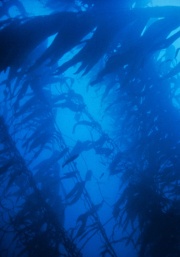Difference between revisions of "Kelp"
Jump to navigation
Jump to search
(username removed) |
(username removed) |
||
| Line 17: | Line 17: | ||
== Authority == | == Authority == | ||
| − | * | + | * Richard S. Lewis, ''Hawley's Condensed Chemical Dictionary'', Van Nostrand Reinhold, New York, 10th ed., 1993 |
| − | * | + | * Random House, ''Webster's Encyclopedic Unabridged Dictionary of the English Language'', Grammercy Book, New York, 1997 |
* ''The American Heritage Dictionary'' or ''Encarta'', via Microsoft Bookshelf 98, Microsoft Corp., 1998 | * ''The American Heritage Dictionary'' or ''Encarta'', via Microsoft Bookshelf 98, Microsoft Corp., 1998 | ||
| − | * ''Encyclopedia Britannica'', http://www.britannica.com Comment: "Kelp." | + | * ''Encyclopedia Britannica'', http://www.britannica.com Comment: "Kelp." Encyclopædia Britannica. 2 Sept. 2004 . |
[[Category:Materials database]] | [[Category:Materials database]] | ||
Revision as of 06:31, 24 July 2013
Description
A large, leafy, brown seaweed from the family Lamarinariaceae, found in cold sea water. Kelp was once a major source for potash and iodine, but is mainly gathered today as a source for algin. It is rich in trace minerals and vitamins.
Synonyms and Related Terms
seaweed
Additional Images
Authority
- Richard S. Lewis, Hawley's Condensed Chemical Dictionary, Van Nostrand Reinhold, New York, 10th ed., 1993
- Random House, Webster's Encyclopedic Unabridged Dictionary of the English Language, Grammercy Book, New York, 1997
- The American Heritage Dictionary or Encarta, via Microsoft Bookshelf 98, Microsoft Corp., 1998
- Encyclopedia Britannica, http://www.britannica.com Comment: "Kelp." Encyclopædia Britannica. 2 Sept. 2004 .

